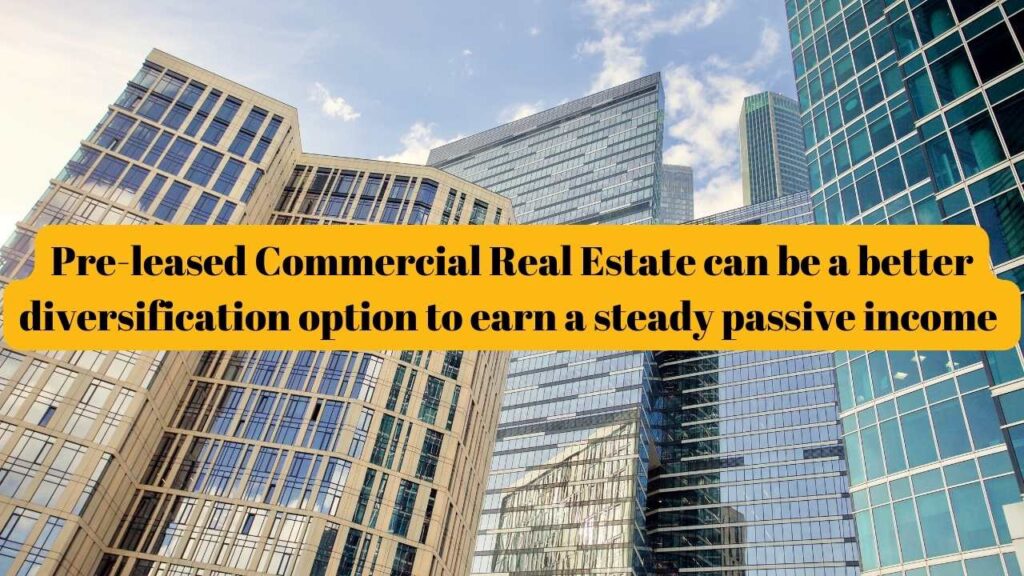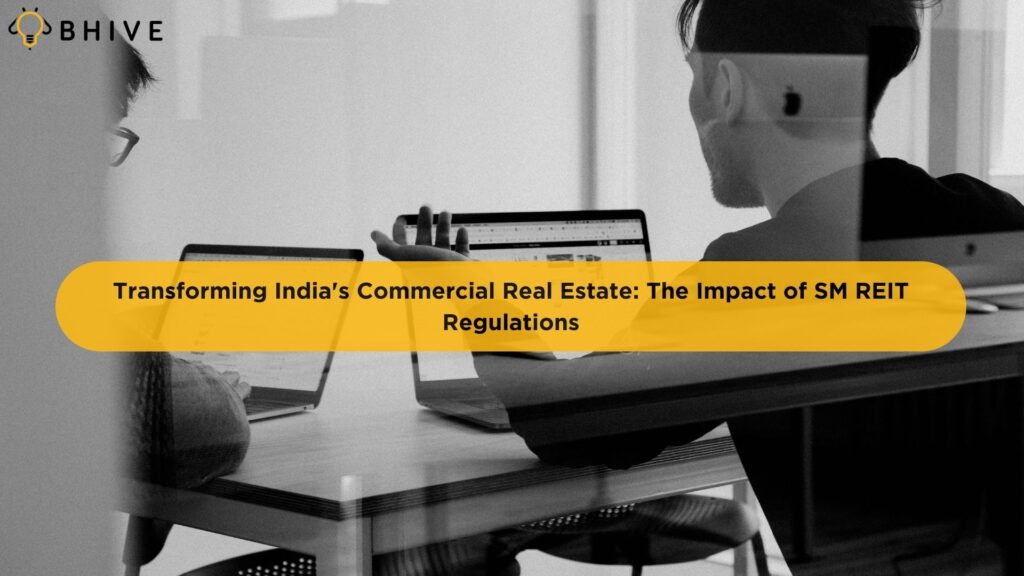Introduction
With the Indian government emphasizing infrastructure development over the next five years, connectivity is set to undergo a substantial transition, driving growth in Tier 2 and 3 cities. These communities, frequently located along industrial corridors, have enormous untapped potential for economic growth and real estate development.
Notably, commercial property costs in metropolitan regions have risen, causing enterprises to shift their focus to these expanding urban hubs. According to current data, industrial corridors cover over 30% of India’s land area, showing enormous potential for expansion. As an investor, capitalizing on these possibilities with Bhive Properties offers substantial profits and the potential to participate in India’s expanding real estate market.
The Government’s Infrastructure Focus
The Government of India is focusing heavily on infrastructure development, making it a critical priority for the next five years. This renewed commitment is motivated by a desire to improve connections across the country, accelerating economic development and expansion. This endeavor is gigantic, with a budget commitment of about ₹7.5 lakh crore for infrastructure projects.
Notable initiatives include the Bharatmala Pariyojana and Sagarmala projects, which aim to improve road and port infrastructure. Furthermore, creating specialized freight routes promises to transform cargo transportation efficiency. These beneficial investments stimulate economic activity and establish Tier 2 and 3 cities as prospective real estate investment hubs, with numerous chances for development and wealth.
Economic Potential of Tier-2 and 3 Cities
Tier 2 and 3 cities in India convey more than simply geographic locations; they are becoming economic powerhouses. These cities are well-positioned to create significant economic growth due to their strategic location, rising markets, and infrastructural development. Here are some crucial elements that highlight their potential:
Strategic Location
Tier-2 and Tier-3 cities in India are ideally situated along important industrial and transportation corridors as essential hubs for local and national logistics networks. This spatial advantage promotes industry cooperation and the effective distribution of products and services, contributing to synergistic economic expansion.
Untapped Markets
Rising urbanization, disposable revenue, and changing customer tastes drive significant growth in Tier 2 and 3 cities. Unlike crowded urban marketplaces, these locations have unexplored opportunities for enterprises to gain market share and become industry leaders. Furthermore, the diversity of customer demographics creates opportunities for personalized products and services that meet distinct regional preferences.
Industrial Development
Many Tier 2 and 3 cities are experiencing a boom in industrial growth owing to favorable government policies, incentives, and infrastructure expenditures. The creation of manufacturing clusters, industrial parks, and special economic zones fosters an environment favorable to enterprises’ growth. This industrial expansion creates job possibilities and supports auxiliary industries such as distribution, storage, and services, which contribute to general economic success.
Cost Advantage
Tier 2 and 3 cities provide a more cost-effective business environment than metropolitan locations, with cheaper land prices, operating costs, and overhead expenses. This cost advantage helps enterprises to increase profit margins while remaining competitive in the market. Furthermore, low real estate prices allow firms to establish a presence and grow operations without incurring extravagant capital expenditures, thus improving their long-term viability.
Infrastructure Development
The government’s emphasis on building infrastructure is converting Tier 2 and 3 cities into contemporary metropolitan hubs with world-class facilities and connections. Improvements in road networks, railroads, airports, and utilities improve accessibility and convenience of conducting business, attracting investors and stimulating economic growth. Improved transportation infrastructure makes intra-city movement easier and enhances inter-city connection, allowing enterprises to explore new markets and trade channels.
Entrepreneurial Ecosystem
Tier 2 and 3 cities are creating vibrant entrepreneurial ecosystems, defined by a supportive ecosystem that includes incubators, accelerators, venture capitalists, and industry organizations. This supportive atmosphere encourages innovation, creativity, and cooperation among startups and SMEs, boosting economic diversification and technical improvement. Furthermore, government efforts like Startup India and Make in India foster entrepreneurship and the growth of small firms, hence creating jobs and wealth.
Real Estate Dynamics
Here are some real estate dynamics to keep in mind:
Market Dynamics
Tier 2 and 3 cities are seeing a shift in real estate dynamics owing to demographic shifts, urbanization, and economic expansion. Due to their dynamic character and rising demand, Tier-2 and Tier-3 cities have many options for developers and investors, in contrast to metropolitan locations where real estate markets may be saturated.
Commercial Property Trends
Rising commercial property costs in urban regions have pushed companies into Tier 2 and 3 cities for growth and investment. The emergence of industries, IT parks, and business centers has boosted the demand for commercial space in these areas, creating a favorable climate for corporate expansion.
Residential Property Market
The domestic real estate industry in Tier-2 and Tier-3 cities is distinguished by affordability and a diverse range of housing alternatives that appeal to various demographics. Developers are focused on inexpensive housing developments, exclusive communities, and unified townships to address the housing demands of urban residents moving to these places.
Industry and Warehousing Segment
With the expansion of the manufacturing and transportation sectors in Tier 2 and 3 cities, there is an increased need for industrial and storage space. The growth of industrial parks, special economic zones, and logistics centers attracts investments from local and foreign enterprises, driving up demand for commercial real estate.
Infrastructure-driven Growth
Infrastructure development projects like roads, airports, and metro rail networks drive real estate expansion in Tier 2 and 3 cities. Improved connection and accessibility make these cities more appealing for real estate investment, resulting in higher property values and construction activity.
Investor Interest
Tier 2 and 3 cities attract investors seeking greater returns and diversification options outside significant centers. Lower land costs, attractive government regulations, and the opportunity for capital appreciation lure institutional and individual investors to these cities’ real estate markets.
Investing in Tier-2 and 3 Cities
India’s Tier 2 and 3 cities provide enticing real estate investment prospects. With their strategic position, booming markets, and infrastructural development, these cities offer intriguing opportunities for investors pursuing high returns and diversity. Tier-2 and 3 cities are more appealing investment locations than urban regions because they have reduced entrance barriers, lower property costs, and comparatively unexplored markets.
Furthermore, government actions to promote industrialization, urban growth, and ease of doing business improve the investment climate. Investing in Tier 2 and 3 cities may provide investors with capital appreciation, consistent rental income, and diversified portfolio opportunities. However, thorough market analysis, due diligence, and an awareness of local dynamics are required for successful investment in these rising metropolitan areas.
Conclusion
Finally, Tier 2 and 3 cities in India emerge as dynamic growth engines, providing unprecedented real estate investment prospects. Investors can achieve significant returns and portfolio diversification in these locations because of their strategic positioning, infrastructural development, and helpful government policies. By capitalizing on untapped potential and harnessing changing market dynamics, investors may start on a wealth-creation journey while contributing to these rising cities’ long-term growth and prosperity.
Are you ready to explore the attractive chances in Tier 2 and 3 cities? Partner with BHIVE now to capitalize on the possibilities for wealth development in India’s thriving real estate sector. Take advantage of our knowledge and wide range of investment possibilities to start your road to financial success and support the expansion and improvement of developing metropolitan areas. Come together with us now to take control of the real estate industry.






No comment yet, add your voice below!